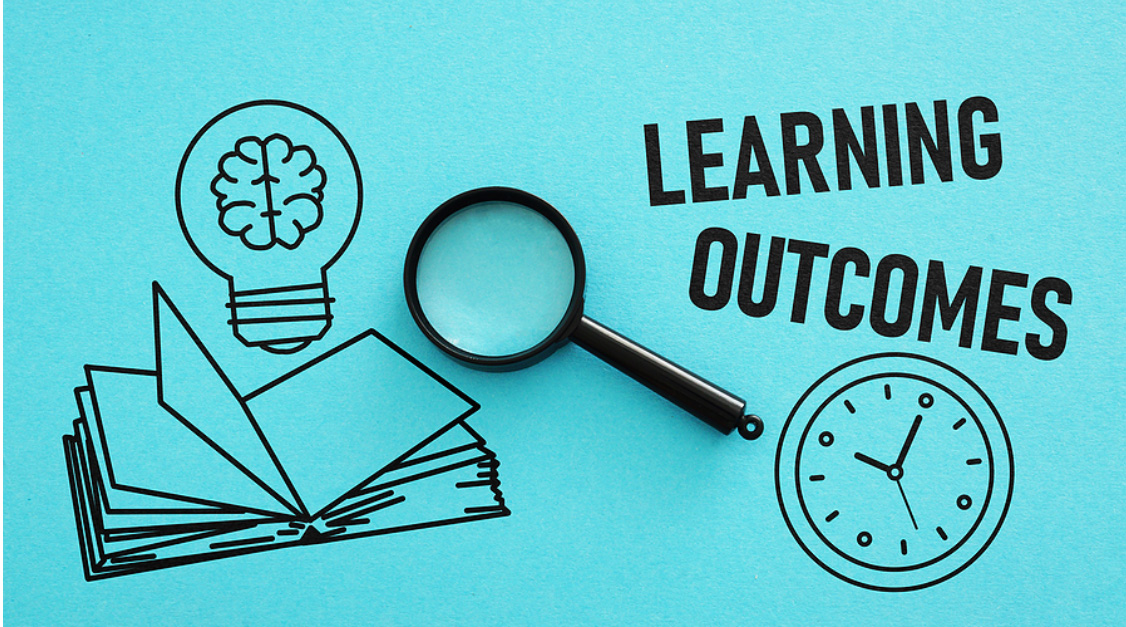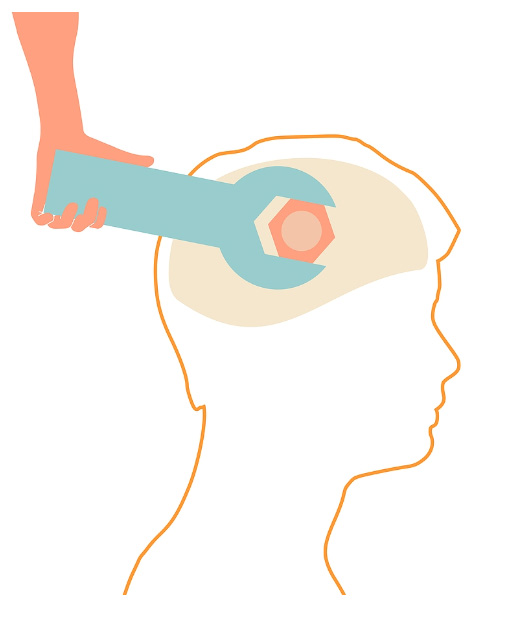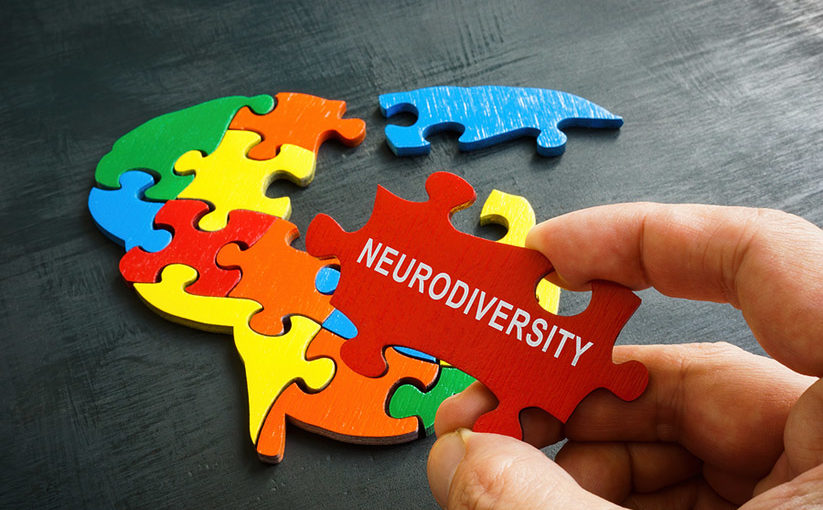
Learning outcomes are an articulation of what a participant will learn during a course or program. These measurable statements define the skills and knowledge a learner will acquire and be able to demonstrate by the end of the learning process.
Clear, understandable, and actionable learning examples are the foundation to creating and marketing any learning activity. They give potential participants a good idea of what to expect from the course or program and are critical to the backwards course design method, as they guide instructors and content creators in creating a learning experience based on the desired outcome for the participant.
In this article, we’ll define a learning outcome, analyse the different types of learning outcomes, their benefits, and provide examples of measurable learning outcomes.

Understanding Learning Outcomes
The first step in understanding how to implement and reap the benefits of learning outcomes is to comprehensively understand what they are.
To help you fully grasp the concept of learning outcomes, let’s start by breaking down the meaning of a learning outcome and what different kinds of learning outcomes are commonly used.
What is the Meaning of Learning Outcomes?
Learning outcomes define the purpose of and desired results from a learning experience.
These specific outcomes provide the criteria against which learners will be assessed, set the expectations for both instructors and participants, and provide the course creator with an easy-to-follow map to create course content that meets those expectations.
At their most simple, they articulate what a learner is going to learn during the proposed course demonstrably. At their most complex, they represent the desired outcome that is used as the foundation of backward course design, allowing instructors and content creators to craft an experience that aligns with the desired outcome.
Types of Learning Outcomes
There are multiple types of learning outcomes that suit different types of courses. To help clarify which type of learning outcomes are best suited to different learning objectives, we’ve broken down the three most common types.
1. Knowledge-based Outcomes
Most commonly associated with academic learning, knowledge-based learning outcomes identify the knowledge a learner needs to acquire.
Examples of measurable knowledge-based outcomes might include:
- By the end of this course, participants will be able to explain the various theories of economic policy.
- Participants will have an understanding of core principles in psychology.
- Learners will be able to articulate the fundamental principles of Newtonian mechanics.

Learn How To Create Personal Learning Journeys For FREE!
2. Skill-based Outcomes
Skill-based outcomes focus on the acquisition of practical skills that are required to complete specific tasks.
Examples of measurable skill-based outcomes might include:
- By the end of this course, participants will be able to code HTML and CSS.
- Participants will have a working understanding of accounting principles.
- Learners will be able to create a WordPress website from scratch.
3. Attitude-based Outcomes
By comparison to skill- and knowledge-based outcomes, attitude-based outcomes focus on the behavioural attitudes and ideals a learner will acquire.
Examples of measurable attitude-based outcomes might include:
- By the end of this course, participants will have increased confidence in their ability to problem-solve.
- Participants will demonstrate a better understanding of the importance of respect and collaboration.
- Learners will be more open to embracing different cultural values within their organisation.

Benefits of Setting Learning Outcomes
Now that you have an idea of what the different types of learning outcomes are and how they relate to different learning objectives let’s look at the benefits of setting well-crafted learning outcomes:
Enhanced Learning
The primary benefit of setting achievable learning objectives that are based on the desired learning outcomes is that it enhances the learner’s experience.
For learners, setting properly defined learning objectives will provide them with a better understanding of their progress throughout the course while emphasising the material benefits of taking the course.
For course creators, learning objectives provide a curriculum design roadmap, ensuring that all content is carefully aligned with the desired outcomes.
Increased Understanding and Retention
By clearly setting out what a learner will learn during a course, learning objectives help learners connect the dots between what they already know and what they will learn.
This helps learners internalise new concepts more easily, which in turn helps them retain newly acquired knowledge better. This is particularly useful for complex academic subjects where some of the steps involved in learning a new subject can seem divorced from the actual result.
Enhanced Self-Reflection
Learning outcomes set expectations for the learner, which in turn encourages them to be mindful of their learning process and reflect on their own performance.
This self-reflection can help learners recognise gaps in their understanding, develop new strategies, measure personal progress, and seek additional help and feedback to fill any gaps.
Improved Course Design
By starting with the desired learning outcomes and working backwards, instructors and content creators can create course material which is more tightly aligned with the desired outcome.
This helps ensure that all participants receive a consistent learning experience tailored to their individual needs. It also reduces the amount of ‘busy work’ in a course, resulting in better use of time and resources for learners and course creators.

Key Components of Setting Effective Learning Outcomes
Of course, the benefits listed above can only be realised if effective and achievable learning outcomes are set.
To ensure that this is the case, here are some of the critical components for crafting effective learning outcomes:
Specificity and Clarity
Clarity is critical when setting learning outcomes – they should be unambiguous, specific and easy to understand. This applies to all types of learning outcomes, be they knowledge-based, skill-based or attitude-based.
The more specific and well-defined they are, the better chances that learners will understand what is expected of them and be able to measure their learning progress accurately. At the same time, they will more clearly understand the benefits of taking the course.
Measurability and Observability
In addition to being transparent and specific, learning outcomes should also be measurable and observable.
While it is possible to set outcomes that are not quantifiable – such as attitude-based outcomes – all types of outcomes should define what the learner can do at the end of the course that wasn’t necessarily achievable before they started.
For example, a knowledge-based outcome might state that participants will be able to ‘explain the various theories of economic policy’ – but it is only measurable if there are specific criteria to assess whether or not a learner has achieved this goal.
Relevancy
It goes without saying that all learning objectives should be relevant to the course, the learning activities employed as part of the course, and the needs of the learner.
There’s no point in setting outcomes that are not meaningful to the learner or don’t directly contribute to their greater understanding of the subject matter.
Attainability
On a similar note, learning outcomes should set realistic expectations around what the learner can achieve within a specific timeframe or with limited resources.
For example, it might not be reasonable to expect learners to become web developers after taking a short course – but they could certainly learn the basics of HTML and CSS.

Learning Outcomes Examples
To provide greater clarity on how learning outcomes should be set, here are some examples of well-crafted learning outcomes:
Corporate Training Programs/Professional Development
Corporate training and professional development tend to cover all three kinds of learning objectives as, depending on the specific industry, they might need to impart academic knowledge, vocational skills or specific attitudes.
Below are three examples of well-crafted learning outcomes of each type that could be used in a workplace training setting:
- Example of Knowledge Outcomes: At the end of this program, participants will demonstrate a thorough knowledge of financial regulations and best practices.
- Example of Skill Outcomes: Upon completion of the program, participants will be able to process invoices and identify discrepancies in accounts confidently.
- Example of Attitude Outcomes: By the end of this program, participants will be able to approach problems with a solutions-oriented mindset and propagate a learning culture in the workplace.
Academic Education
By its nature, academic education focuses heavily on knowledge-based learning objectives.
Below are three examples of well-crafted knowledge outcomes that could be used in an academic setting:
- Example 1: Upon completion of the course, participants will demonstrate a comprehensive understanding of the history and principles behind major economic theories.
- Example 2: By the end of the program, students will be able to articulate the various components of nutrition and how they affect health.
- Example 3: At the end of this course, participants will be able to compare and contrast different religious traditions and their core beliefs.

Developing, Implementing and Assessing Learning Outcomes
Developing, implementing and assessing learning outcomes is a critical part of the educational process, as it helps ensure that learners are gaining knowledge and skills in a meaningful way and that course creators are providing an effective learning experience.
How to Develop Learning Outcomes
The development of learning outcomes is intimately connected to the needs of the learner. For instance, when setting outcomes for a corporate training program, the creators might start with the need for learners to master a specific skill or knowledge base and then work backwards from there to create clear and measurable objectives.
The same applies to academic courses since these are usually graded on an assessment of the learner’s knowledge at the end. A good example of this would be the development of a course on grammar – beginning with the desired outcome of mastering specific rules of syntax and then developing activities that help learners achieve this objective.
How to Implement Learning Outcomes
Once desired learning outcomes are identified, they must be effectively implemented through activities and resources.
In the corporate training context, this might involve creating handouts, presentations and exercises that allow learners to apply their knowledge practically.
In academia, it could include designing lectures, setting assignments and providing reading material that allows students to explore the subject matter further on their own terms.
How to Assess Learning Outcomes
Once implemented, learning outcomes should be regularly assessed to ensure they remain meaningful and relevant. There are three primary methods of assessing learning outcomes:
Traditional Assessment Approaches
Traditional assessment approaches for learning outcomes usually involve some feedback form, written exam or test paper. This allows teachers to evaluate whether the learners have achieved the desired goals and/or mastered the subject matter as required.
Authentic Assessment Methods
Authentic assessment methods for learning outcomes involve assessing learners in more creative ways. This could include practical exercises, simulations or case studies that allow the learner to demonstrate their knowledge and skills in a real-world application.
Formative and Summative Assessments
Formative and summative assessments are used to assess learning outcomes in a way that provides meaningful feedback to both the learner and the course creators.
Formative assessments occur during the course, while summative assessments occur at the end. These methods of assessing learning outcomes allow teachers and trainers to measure their success in imparting knowledge and skills to their learners.
How to Maximise the Impact of Learning Outcomes
There are several ways to maximise the impact of learning outcomes, including the following:
Continuous Improvement Approach
Taking the continuous improvement approach to learning outcomes involves regularly reviewing them and making adjustments as needed. This allows course creators to ensure that their learning outcomes remain relevant and achieve the desired goals.
Personalisation and Tailoring to Learner Needs
Personalised learning objectives are tailored to the individual learner’s needs and provide a more effective way of maximising learning outcomes. By understanding what each learner needs to succeed, course designers can create objectives that are based on individual learning styles and allow learners to progress at their own pace.
Feedback and Reflection
As mentioned, one of the benefits of learning objectives is an increased opportunity for feedback and reflection. This is because they clarify the end goal for a course or program, allowing learners to track their progress and adjust their activities accordingly. This improves learning outcomes and encourages the learner to take ownership of their own development.
Regular reflection and reviews allow learners to focus on their progress, identify areas for improvement and adjust their approach accordingly. Feedback allows course creators to identify opportunities for improvement and make meaningful adjustments to their courses based on the responses of their learners.
Final Thoughts
Ultimately, learning outcomes provide an invaluable opportunity to measure and assess progress in any learning environment.
By understanding how to develop, implement and assess learning outcomes effectively, course creators can ensure that their learners get the most out of the experience and make meaningful progress towards achieving their desired learning goals.
Clear and relevant course goals also allow learners to become more engaged and motivated, increasing the likelihood of achieving successful learning outcomes.
Skillshub’s learning and development platform enables course creators to develop, implement and assess learning objectives efficiently and effectively. Our eLearning platform also allows trainers to provide meaningful feedback and create personalised learning paths for their learners, ensuring that each learner can reach their maximum potential.
As an eLearning company, Skillshub is committed to creating efficient and impactful learning experiences.
Request a demo today to get started with Skillshub!













